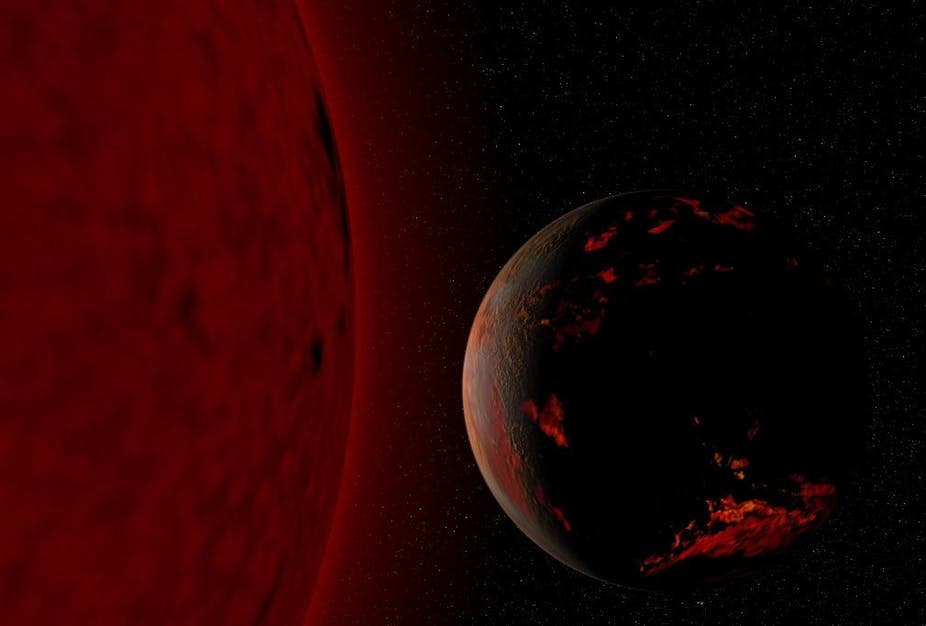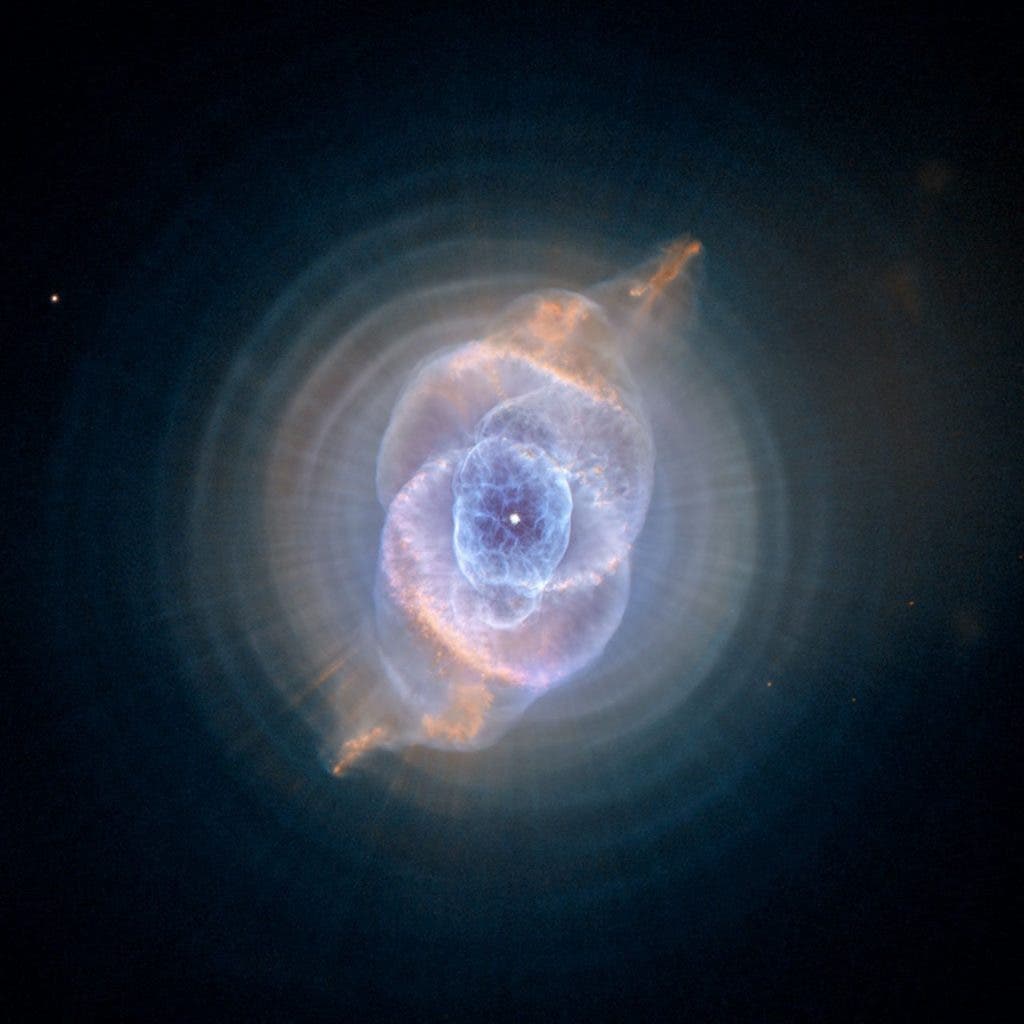All life on Earth owes its existence to the Sun, whose rays have showered the planet with energy for billions of years. But, like all things, the Sun has its days numbered. Every star has a life cycle consisting of formation, main sequence, and ultimately death when it runs out of fuel — the Sun is no exception.

The good news is that before this will happen, our species should have evolved into something entirely different or long become extinct. According to scientists, the sun has enough fuel to keep it running for another 5 billion years. When that happens, the solar system will be transformed forever.
The life cycle of the Sun

The star is classed as a G-type main-sequence star, also known as a yellow dwarf. Like other G-type main-sequence stars, the Sun converts hydrogen to helium in its core through nuclear fusion. Each second, it fuses about 600 million tons of hydrogen to helium. The term yellow dwarf is a misnomer since G stars actually range in color from white to slightly yellow. The Sun is, in fact, white but appears yellow because of Rayleigh scattering caused by the Earth’s atmosphere.
The Sun and its planets have been around for about 4.57 billion years. They were all formed out of the same giant cloud of molecular gas and dust which, at some critical point, collapsed under gravity at the center of the nebula.
Due to a nonuniform distribution of mass, some pockets were denser, consequently attracting more and more matter. At the same time, these clumps of matter that were increasing in mass began to rotate due to the conservation of momentum. The increasing pressure also caused the dense regions of gas and dust to heat up.
Scientists’ models suggest that the initial cloud of dust and gas eventually settled into a huge ball of matter at the center, surrounded by a flat disk of matter. The ‘ball’ would eventually turn into the Sun once the temperature and pressure were high enough to trigger nuclear fusion, while the disk would go on to form the planets.
Scientists estimate that it took the Sun only 100,000 years to gather enough mass in order to begin fusing hydrogen into helium. For roughly a few million years, the Sun shone very brightly as a T Tauri star, before it eventually settled into its current G-type main-sequence configuration.
Like most other stars in the universe, the Sun is currently living through its ‘main sequence’ phase. Every second, 600 million tons of matter are converted into neutrinos and roughly 4 x 1027 Watts of energy.
What happens to Earth after the sun dies
There is only a finite amount of hydrogen in the Sun which means it must eventually run out. Since its formation, scientists estimate the Sun consumed as much hydrogen as about 100 times the mass of the Earth.
As the Sun loses hydrogen, its fuel-holding core shrinks, allowing the outer layers to contract towards the center. This puts more pressure on the core, which responds by increasing the rate at which it fuses hydrogen into helium. Naturally, this means the Sun will get brighter with time.
Scientists estimate that the Sun’s luminosity increases by 1% every 100 million years. Compared to when it turned into a G-type main-sequence star 4.5 billion years ago, the Sun is now 30% more luminous.
All of this means that the Sun will slowly turn the heat up on Earth. About 1.1 billion years from now, the Sun will be 10% brighter, triggering a greenhouse effect on Earth similar to the warming that made Venus into a hellish planet.

The heat transfer with Earth’s atmosphere would be huge by this point in time, causing the oceans to boil and the ice caps to melt. As the atmosphere becomes saturated with water, high energy radiation from the Sun will split apart the molecules, allowing water to escape into space as hydrogen and oxygen until the whole planet becomes a barren wasteland.
Life would stand no chance, permanently sealing Earth’s fate as the next Venus or Mars. Speaking of which, at this point into the future, Mars’ orbit would move into the habitable zone, which might become a second Earth for a short while before it too would become unsalvageable.
Some 3.5 billion years from now, the Sun will be 40% brighter than today.
And, in about 5.4 billion years, the Sun will run out of hydrogen fuel, marking the end of its main sequence phase. What will inevitably happen next is that the built-up helium in the core will become unstable and collapse under its own weight. Since the Sun first started fusing hydrogen, all of the helium it has produced has accumulated in the core with no way to get rid of it.
At this point, the Sun will be ready to enter its “Red Giant” phase, characterized by an enormous swelling in size due to gravitational forces that compress the core and allow the rest of the sun to expand. The Sun will grow so large that it will encompass the orbits of Venus and Mercury, and quite possibly even Earth. Some astronomers estimate it might grow to 100 times its current size.
What this means is that even if life on Earth somehow miraculously survives the tail-end of the Sun’s main sequence, it will most certainly be destroyed by a Red Sun so large it will touch our planet.
Don’t be blue, even stars have to die
The Sun will remain in a Red Giant phase for about 120 million years. At this point, the core of the Sun, when it reaches the right temperature and pressure, will start fusing helium into carbon, then carbon and helium into oxygen, neon and helium into magnesium, and so on all the way up to iron. This reaction is triggered when the last remaining shell of hydrogen that envelops the core is burned.
The Sun will then eventually expel its outer layers and then contract into a white dwarf. Meanwhile, all the Sun’s outer material will dissipate, leaving behind a planetary nebula.
“When a star dies it ejects a mass of gas and dust – known as its envelope – into space. The envelope can be as much as half the star’s mass. This reveals the star’s core, which by this point in the star’s life is running out of fuel, eventually turning off and before finally dying,” explained astrophysicist Albert Zijlstra from the University of Manchester in the UK.
“It is only then the hot core makes the ejected envelope shine brightly for around 10,000 years – a brief period in astronomy. This is what makes the planetary nebula visible. Some are so bright that they can be seen from extremely large distances measuring tens of millions of light years, where the star itself would have been much too faint to see.”

If it were much more massive, the Sun’s final fate would have been much more spectacular exploding into a supernova and perhaps forming a black hole. Due to its relatively small size, however, the Sun will likely live as a white dwarf for trillions of years before finally fading away entirely leaving the solar system in pitch-black darkness. The Sun has now become a black dwarf.
In summary: the sun has about 5-7 billion years left of its main sequence phase — the most stable part of its life. However, life on Earth might become extinct as early as 1 billion years from now due to the Sun becoming hot enough to boil the oceans.



